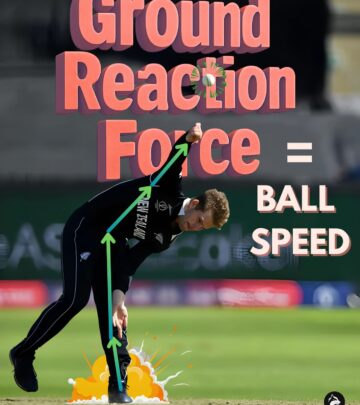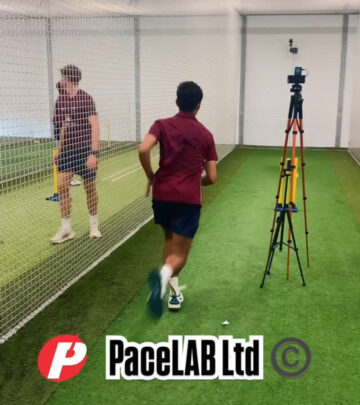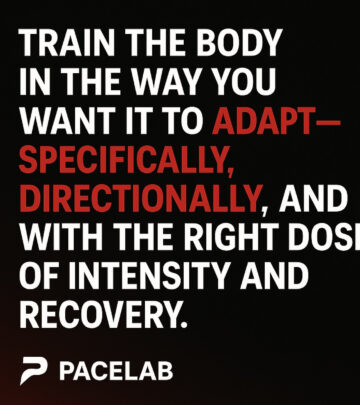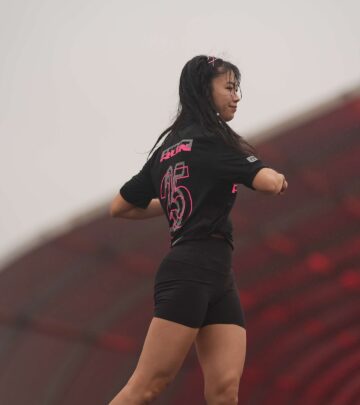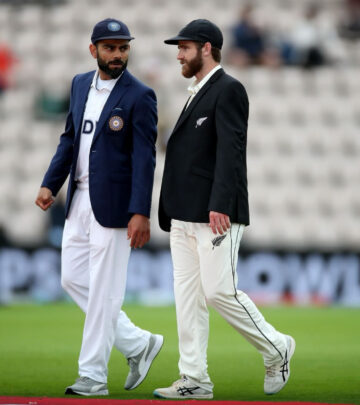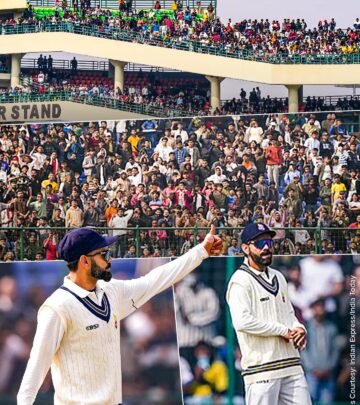Decoding Fast Bowling Speed
Uncover the biomechanical secrets and neuromuscular dynamics that propel cricket action.
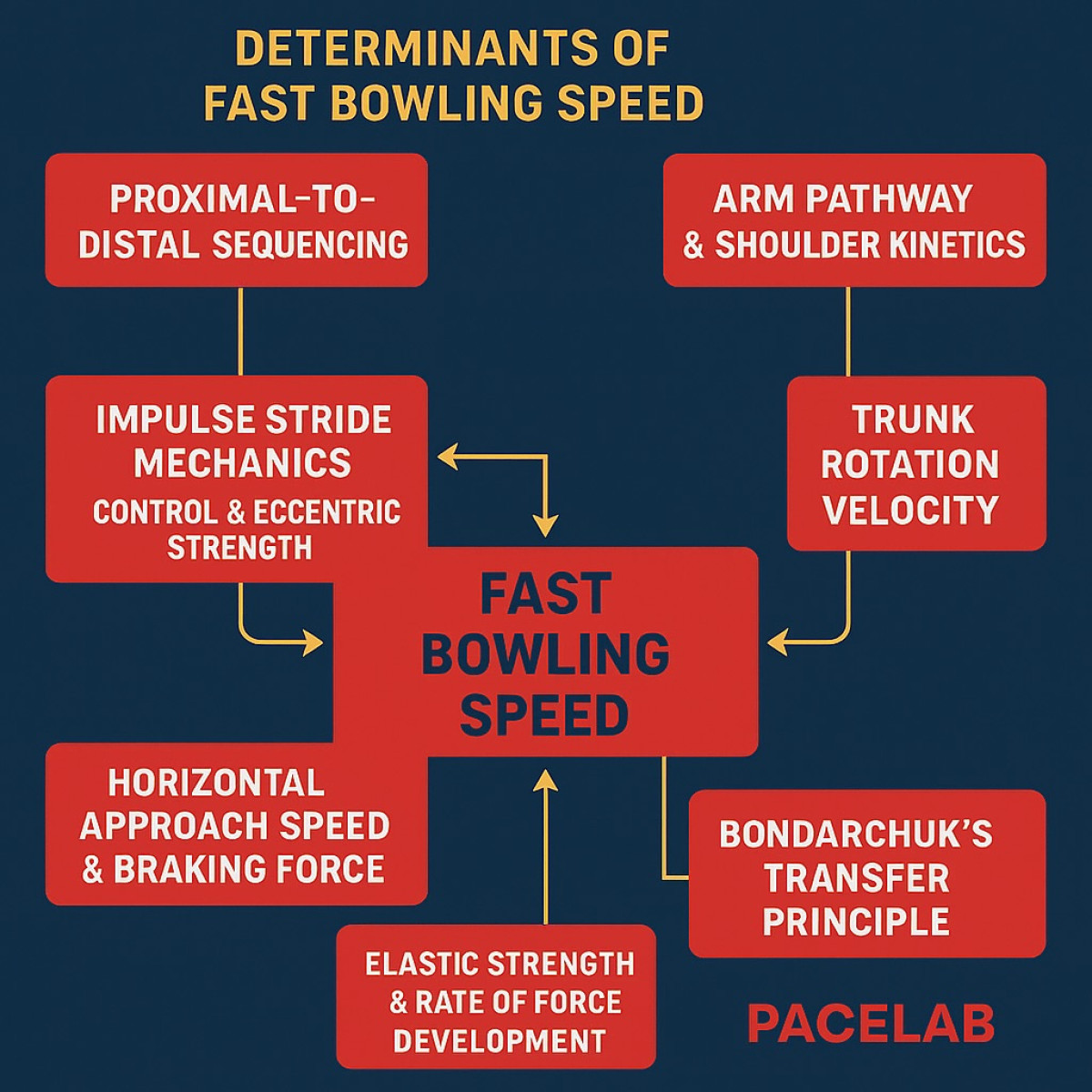
Image: Instagram
In a recent deep-dive into the science behind rapid cricket deliveries, Pacelab Limited has laid out a comprehensive explanation of what truly drives fast bowling speed. Steffan Jones, who has been at the forefront of using advanced biomechanical profiling in cricket training, explains that it isn’t merely about throwing hard. Instead, fast bowling speed results from the precise interplay of measurable biomechanical and neuromuscular factors. These factors, when properly trained and transferred, generate maximum momentum from the bowler’s run-up to the final ball release.
Proximal To Distal Sequencing
At the heart of the Pacelab system is the concept of proximal-to-distal sequencing. This principle describes how energy is efficiently transferred from the base of the body upward. It begins with foundations in the pelvis and trunk before rushing through the shoulder, arm, and hand. If the kinetic chain is disrupted at any point, significant energy is lost. Jones emphasizes that true speed is not just a matter of generating force but controlling and directing it. This seamless sequencing ensures that every segment of the body plays its part in accelerating the ball, turning raw physical effort into refined execution.
Impulse Stride Mechanics
Another critical determinant is impulse stride mechanics—the final moments of the run-up when the bowler’s center of mass is projected forward. In this phase, eccentric strength and refined collision control guarantee that abrupt deceleration forces do not cause energy wastage. A stable back foot contact (BFC) is essential because it stores and redirects kinetic energy into the delivery phase. This phase is much more nuanced than it might seem: it requires a blend of speed in the run-up and the proper bracing effect at the crucial moment of ball delivery. The Pacelab method highlights that even a slight mismanagement of this impulse can make a significant difference in ball velocity.
Horizontal Approach And Braking Force
Once the impulse stride is effectively executed, the bowler’s horizontal approach speed and the corresponding braking force come into play. These factors work in tandem to translate forward momentum into vertical force during the front-leg block phase. A stiff and rapidly extending block leg is critical for enabling the trunk to rotate swiftly and efficiently. This stage is where the momentum built during the run-up transforms into the kinetic energy that propels the ball. Coaches using the Pacelab system often note that it is at this juncture that fine adjustments—like perfecting braking technique—can deliver measurable gains in ball speed without compromising a bowler’s balance or risking injury.
Arm Pathway And Shoulder Kinetics
The culmination of effective bowling mechanics is seen in the final arm pathway and shoulder kinetics. Here, factors such as late acceleration, pre-tension in the shoulder, and elastic recoil come together to add that final burst of velocity. However, none of these elements can perform optimally without the support of elastic strength and a rapid rate of force development (RFD) in the posterior chain and core muscles. When these areas are well-conditioned, the entire kinetic chain works like a finely tuned machine, delivering not only speed but also accuracy and control. Jones’ insights here are particularly illuminating, reminding coaches and players alike that arm speed is a product of a well-synchronized system rather than an isolated movement.
Neuromuscular Coordination
Underlying all these determinants is neuromuscular coordination. The best bowlers, according to the Pacelab philosophy, do not rely solely on brute force. Instead, they train for precision, timing, and adaptability under pressure. The integration of muscle activation patterns ensures that every joint and muscle group works in harmony to maintain the integrity of the bowling action. This coordination is what transforms raw physical input into controlled output, meaning that even subtle differences in timing can result in noticeable enhancements in speed and performance.
In additional discussions seen on Instagram, Jones and his peers have referenced the risks of outdated techniques such as an inflexible 12 o’clock release model. Previous posts have detailed how a misaligned trunk or improper lateral flexion can expose bowlers to increased injury risks, including lumbar stress fractures. Research incorporated into the Pacelab system draws on Davis’s Law and Wolff’s Law, which explain how soft tissues and bones adapt to directional loads. This scientific approach reinforces that a well-structured training regimen does not just strive for velocity; it also aims to safeguard athletes by building movements that are both powerful and sustainable.
The Pacelab principle, encapsulated in the idea of ‘transfer,’ ensures that training mirrors the demands of an actual match. Whether it’s through structured drills that modify load and intensity or through careful biomechanical profiling, the system reinforces the idea that speed is a holistic state rather than the result of isolated increments of force. Such principles are echoed in case studies where bowlers have improved their ball speed by even 6 kph within 30 minutes of focused adjustments—demonstrating that sometimes, small changes in mechanics can lead to big results.
Steffan Jones, whose expertise is widely recognized in biomechanical circles, also brings attention to how adaptable movement solutions replace rigid, repetitive drills. Rather than chasing an idealized technique, bowlers working within the Pacelab framework learn to embrace variability in their motion—choosing adaptability over cosmetic form. This nuanced understanding challenges conventional coaching wisdom and pushes for a training culture that is both innovative and scientifically grounded.
Ultimately, the insights shared in the Pacelab post underscore that achieving optimal ball speed is a systemic endeavor. It isn’t enough to focus solely on muscle power; one must consider the entire spectrum of biomechanical and neuromuscular factors that drive fluid, efficient movement.
While the technical details may appear daunting, the message is clear: smart training that respects the biomechanics of fast bowling can elevate performance while reducing injury risks. Coaches and players who integrate these principles not only build speed but also ensure that their actions are robust under the pressures of competitive cricket. The harmonious blend of sequencing, stride mechanics, controlled braking, and precise arm kinetics is what sets apart great bowlers from the rest.
As the cricketing world continues to evolve, blending tradition with cutting-edge science, techniques like those championed by Pacelab are paving the way for a new era of performance. For those in the coaching fraternity and aspiring fast bowlers alike, these insights offer a blueprint for achieving excellence on the field—a reminder that true speed is born from a perfectly orchestrated system.
Read full bio of Joyce




